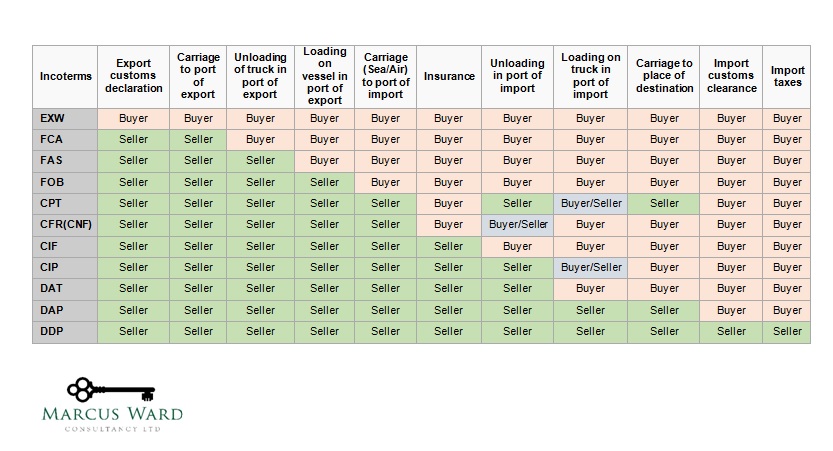Latest from the courts
In the H Ripley & Co Limited First Tier Tribunal (FTT) case the issue was whether the appellant had satisfactory evidence to support the zero rating of the export of goods (scrap metal).
Background
HMRC denied zero rating on the basis that the appellant did not provide satisfactory evidence to support the fact that the scrap metal was removed from the UK.
The requirements are set out in VAT Notice 725 para 5 and acceptable documentary evidence may include:
- the customer’s order – including customer’s name and delivery address
- inter-company correspondence
- copy sales invoice
- advice note
- packing list
- commercial transport documents from the carrier responsible for removing the goods from the UK, for example an International Consignment Note (CMR) fully completed by the consignor, the haulier and signed by receiving consignee
- details of insurance or freight charges
- bank statements as evidence of payment
- receipted copy of the consignment note as evidence of receipt of goods abroad
- a signed CMR document or note
- a bill of lading
- an airfreight invoice
- an invoice from the carrier of the goods
- official documents issued by a public authority, such as a notary, confirming the arrival of the goods
- any other documents relevant to the removal of the goods in question which you would normally get in the course of business
or a combination of the above.
HMRC advised the appellant that it had received an information request from the Belgian tax authorities in respect of certain transactions and consequently, HMRC required information on the company’s documents in connection with the supplies. On receipt of the information HMRC concluded that the evidence was insufficient to support zero-rating so the sales were treated as standard rated and the appellant’s repayment claim was reduced to reflect this.
In these circumstances the burden of proof is on the appellant to show that it has satisfied the conditions set out in Notice 725 to zero-rate its supplies and provide documentation to show that the goods were removed from the UK.
Decision
The court noted that it was not HMRC’s position that supplementary evidence could not be provided post the required three-months period but that it was entitled to decline the additional evidence when it was provided some 18 to 30 months after the three-month period. It was clear that the evidence of removal must be obtained within three months and not that the valid evidence is brought into existence within the three-month time limit and obtained at some future date.
Notice 725 sets out the conditions which attach to the entitlement to zero-rate supplies. The FTT considered it to be clear from paragraph 4.3 and 4.4 (which have the force of law) that the onus is on the exporter company claiming zero-rating to gather sufficient evidence of removal within three months of the date of the supply. If it does not do so, it is not entitled to zero-rate the supplies.
Specifically, the court considered:
- Sales Invoices – did not provide clear evidence that the goods were removed from the UK. Despite the invoices confirming the sale of scrap metal to a Belgium registered company it did not follow that the address of the purchaser is the same address as the destination that the goods were sent to.
- Bank Statements – simply provided proof of payment they did not confirm who received the goods nor where the goods were delivered.
- Weighbridge Tickets – merely confirm a consignment of scrap metal was sold to a Belgium based company and the goods were collected by a UK registered vehicle.
- CMRs – none of the CMRs were fully completed by the haulier and signed by the receiving consignee.
- P&O Boarding Cards –a taxpayer must have in its possession valid evidence of export within three months from the time of supply. The boarding cards were not provided to HMRC until 30 May 2018, some 18 to 30 months after the disputed consignments took place. It was not disproportionate for HMRC to state that the time limit for obtaining valid evidence of removal was three months and that the substantive requirements of Notice 725 had not been met. In any event, the court did not accept that the boarding cards evidence the exports of the scrap metal; none of the reference numbers on the boarding card match those used in any of the other documents and none of the lead names on the boarding cards match any of the other names in any other document. The boarding cards do not have any identifying features such that they may be matched with any of the disputed consignments.
- E-mails and WhatsApp messages –none of the messages evidence that the loads were exported. At best they evidence a request from the buyer to a carrier to collect goods from the supplier’s yard and the WhatsApp messages were silent on whether the loads were exported from the UK.
The appeal was dismissed, and the assessments were upheld because none of the documents either individually or taken as a whole, were sufficient evidence to support zero-rating.
Commentary
Yet another case illustrating the importance of insuring correct documentation is held. It is not sufficient that goods leave the UK, but the detailed evidence requirements must always be met.

